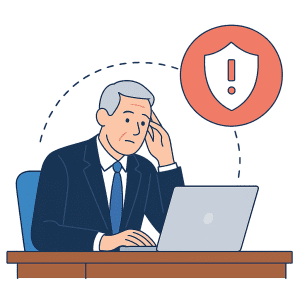Why Some IT Providers Take Too Long to Respond
When something breaks, you expect a quick response. But with some IT providers, even simple issues can drag on—emails go unanswered, tickets sit in limbo, and updates never arrive. You shouldn’t have to chase someone just to get support. Slow IT support is a real problem. So why does it keep happening?

The Problem Isn’t You—It’s Their Process
Slow support is almost never about how you reported the issue. In most cases, it’s a sign that your provider doesn’t have a working system behind the scenes. A ticket might sit because no one assigned it. Or it was passed between teams with no follow-through. Or the technician working on it didn’t have the tools or authority to resolve it—and no one else stepped in.
The root cause is usually a lack of structure: no clear response timelines, no escalation process, and no accountability when things fall behind.
What Fast, Reliable Support Looks Like
Good providers don’t make you wonder what’s going on. They track every issue, respond quickly, and keep you informed. Behind the scenes, they’re following a playbook that includes:
-
Routing each issue to the right person, right away
-
Prioritizing based on business impact, not guesswork
-
Sending clear updates so you’re never left waiting in the dark
-
Escalating problems automatically if they aren’t resolved fast enough
When that system is in place, you don’t just get faster fixes—you get peace of mind.
You Deserve Better Than Uncertainty
If you’ve been left guessing too many times—when will someone respond, who’s handling this, is it being worked on at all—that’s not just frustrating. It’s unprofessional. Support should be predictable, organized, and proactive. And when it isn’t, it’s fair to expect more.
If you need help, Contact Us for a free consultation.
Updated 6/24/25



